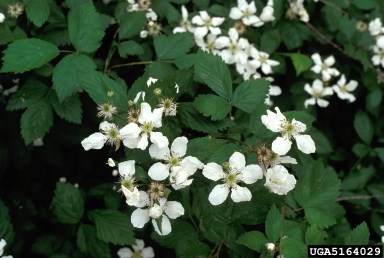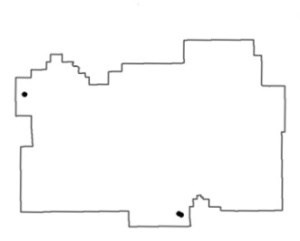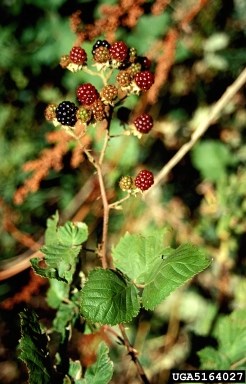
TNC/ John Randall Plant Description
Himalayan blackberry (Rubus armenaicus) is a perennial shrub that spreads vegetatively to form large mounds. The leaves of the first year shoots are 3 to 8 in long and consist of 5 leaflets arranged like the fingers of a hand. In their second year, the shoots become smooth and produce flowering canes whose smaller leaves have 3 leaflets. The leaflets are oval, toothed, and bear thorns along the underside of the mid-rib. Flowering extends from early July through September. Fruits are borne in terminal clusters. Native to western Europe, Himalayan blackberry was introduced into North America in 1885 as a cultivated crop. Lookalikes: Native whitestem blackberry (Rubus leucodermis) is less thorny, has smaller flowers and fruit, and the older canes have a white, powdery coating that rubs off. It is common in partly shaded, rocky areas throughout the park.


Ecology and Reasons for Concern
Himalayan blackberry is an aggressive invasive species. Once established, it can spread rapidly into undisturbed sunny areas, displacing native herbaceous plants and shrubs. Plants spread by seed or by older canes arching over to root several feet from the original plant. Once established, Himalayan blackberry is difficult to eradicate. Damaged plants can re-sprout from any piece of root left in the soil. Mechanical treatment is effective if repeated consistently over a period of years to remove all aboveground parts and exhaust the extensive root system. The species is usually intolerant of shade, so the best long-term treatment is to maintain an intact canopy of native species, especially shrubs and trees.
|
Last updated: February 28, 2015
